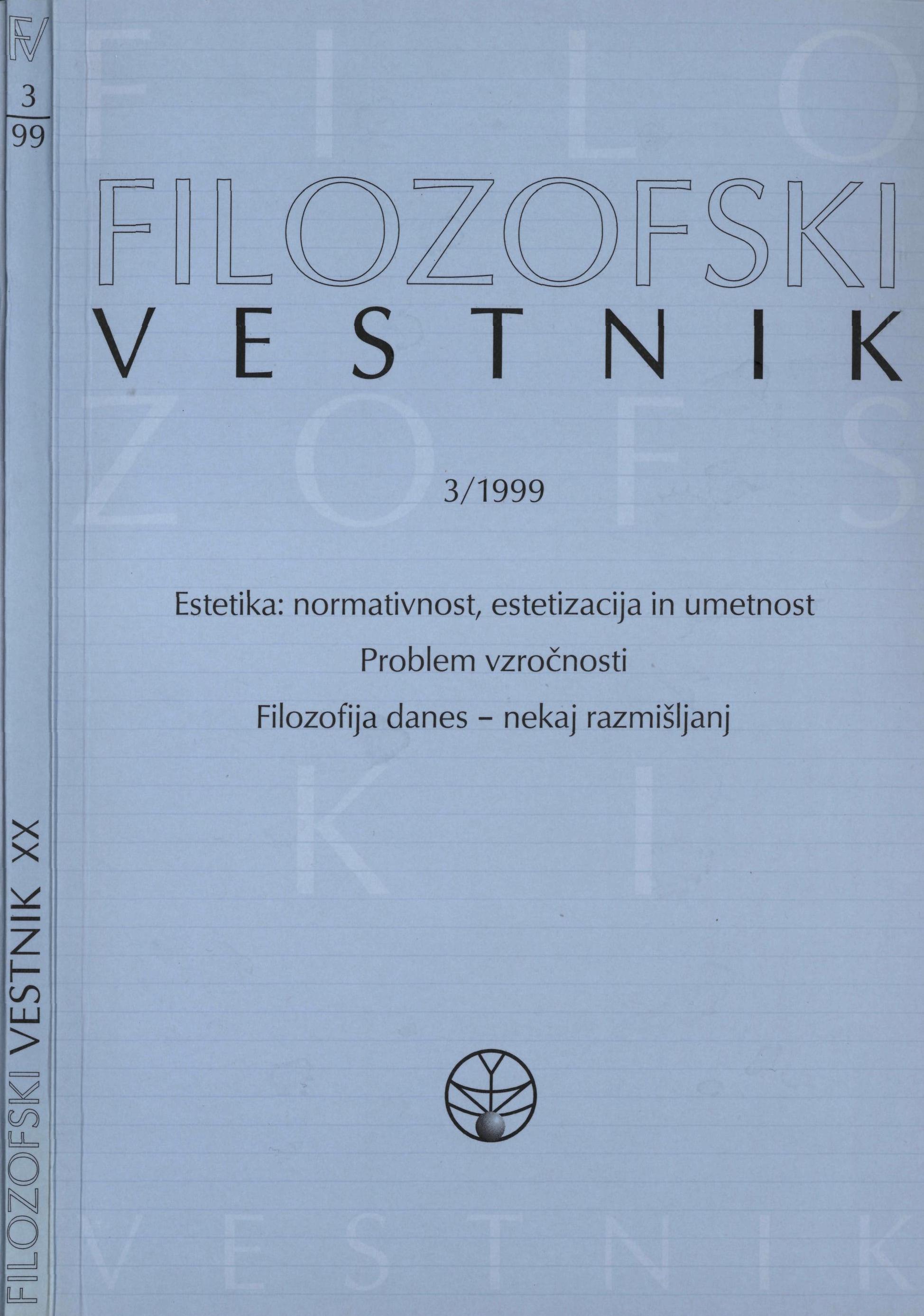Vihar v kozarcu vode
Povzetek
Kako obravnavati normativnost v visokem modernizmu in historični avantgardi, in kako uvesti normativnost v postmoderno umetnost in kulturo? Avtor predlaga, da si nalijemo tri kozarce vode. Ortega y Gasset je z priliko o kozarcu vode protestiral proti estetizaciji vsakdanjih predmetov. Vladimir I. Lenin je s priliko o kozarcu vode protestiral proti seksualni osvoboditvi, kakršno je predlagala Aleksandra Kollontaj, ki je hotela iztrgati žensko socialnemu in političnemu nadzorstvu. Rudolf Arnheim je s priliko o kozarcu vode uvedel abstraktno umetnost kot enakovredno reprezentativni, vendar tako, da je hkrati zagotovil prevlado univerzalne estetske normativnosti v umetnosti.Avtor v zaključku s kritičnim pogledom na Lyotardov koncept poganstva zastopa staliašče, da normativnost ni namenjena razlikovanju med dobrimi in slabimi umetniškimi deli, ampak med pravimi in nepravimi.Za konstituiranje normativnosti v postmodernih okoliščinah bo treba upoštevati tista umetniška dela, ki so dobra, a jih postmoderna poganska normativnost občuti kot neprava. Sicer pa je razpravljanje o normativnosti konstitutivno za umetnost,vendar ob ohranjanju filozofske kritičnosti in potrpežljivosti, ki jo ponazarja Bergsonova prilika o kozarcu vode.Prenosi
Podatki o prenosih še niso na voljo.
Prenosi
Objavljeno
2016-01-29
Kako citirati
Kreft, L. (2016). Vihar v kozarcu vode. Filozofski Vestnik, 20(3). Pridobljeno od https://ojs.zrc-sazu.si/filozofski-vestnik/article/view/4121
Številka
Rubrike
Estetika: normativnost, estetizacija in umetnost
Licenca
Avtorji jamčijo, da je delo njihova avtorska stvaritev, da v njem niso kršene avtorske pravice tretjih oseb ali kake druge pravice. V primeru zahtevkov tretjih oseb se avtorji zavezujejo, da bodo varovali interese založnika ter da bodo povrnili morebitno škodo.
Podrobneje v rubriki: Prispevki





